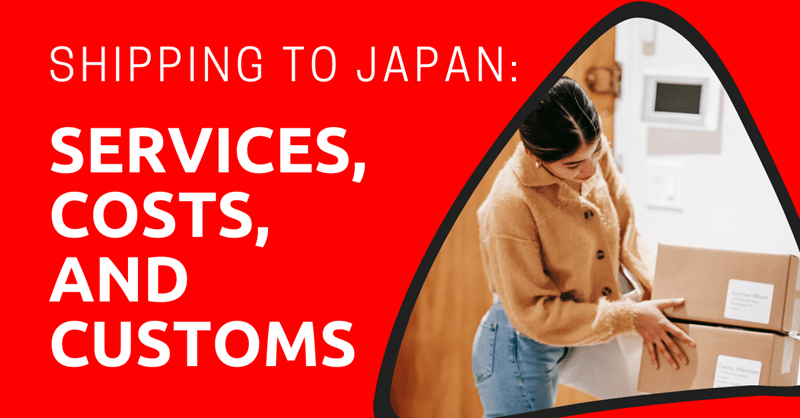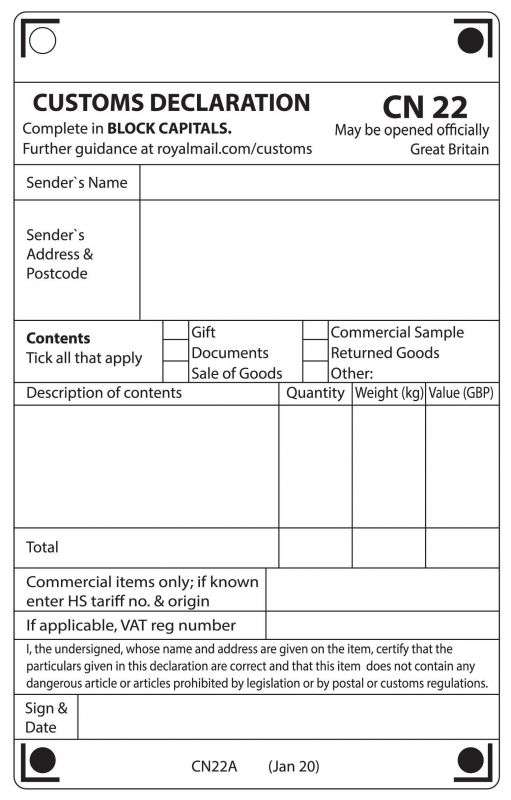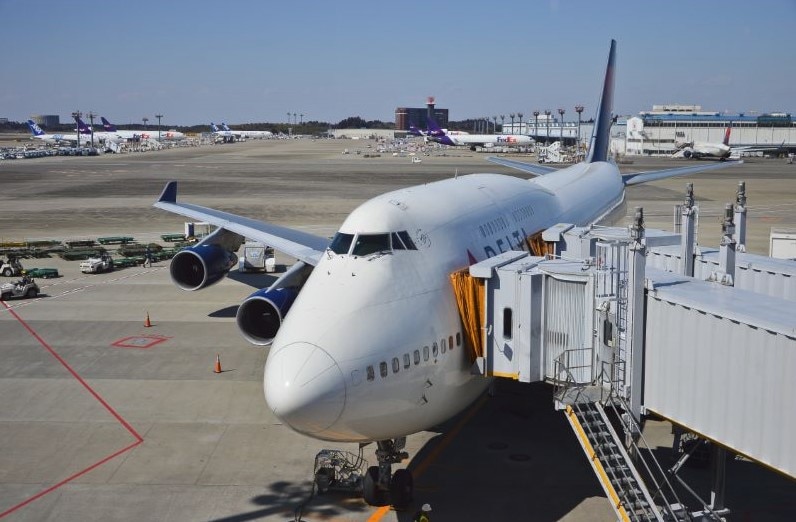
Inevitably, when you move to Japan, or have lived here for some time, you will want to either have someone ship something to you from home, or you will want to order your favorite brands that you can’t get in Japan.
While Amazon Japan offers a plethora of foreign goods and a great selection of other products, there will come a time when you order from abroad and have it shipped to Japan.
I have prepared a guide, based on my experiences, to help make this as easy as possible for you. Whether you are ordering brand items, having packages sent to you, or in some cases, ordering something very large, like furniture or even a car, the shipping process will require some know-how and preparation.
This guide not only offers suggestions on how to safely prepare your packages for overseas shipping but also tips on the shipping paperwork, finding international shipping companies, calculating your costs, and understanding Japanese customs regulations.
This article will take approximately 19 minutes to read. Don't have the time right now? No worries. You can email the ad-free version of the article to yourself and read it later!
Disclaimer: This article may include links to products or services offered by ExpatDen’s partners, which give us commissions when you click on them. Although this may influence how they appear in the text, we only recommend solutions that we would use in your situation. Read more in our Advertising Disclosure.
Contents
- The Basics for Shipping a Package to Japan
- Shipping Companies for Small/Medium Packages
- Shipping Cost
- Shipping Large Items to Japan
- Amazon and Non-Japanese Companies that Ship to Japan
- On Average How Long Does It Take for a Package to Arrive?
- Prohibited and Illegal Items
- Consumption Tax When Your Package Arrives in Japan
- Household Goods Tax Exemption
- Insuring Your Package
- What If There is No Way to Ship What You Want to Japan?
- Now, on to You
The Basics for Shipping a Package to Japan
This information is something that you need to convey to the person shipping a package to you. Some of this may seem like common sense, but it is worth considering to ensure your packages arrive undamaged.
Preparing Packages
When shipping anything to Japan, needless to say, you need to select sturdy packaging and pack it with the right cushioning materials to protect your goods.
If you are shipping something fragile, you need to take extra care so it arrives in one piece. Aside from your traditional options like bubble wrap or packing peanuts, I have used plastic air pillows, crumbled or shredded newspaper, and cardboard when I shipped something from America to Japan.
I usually send myself a package when I visit home, so I don’t have to carry everything in my suitcase, which has limited space.
Here are some useful materials I have found that are suggested by a popular international shipping company.
Shipping Paperwork
I am using America as an example, but when you send a package from the post office (from whatever country you call home outside of Japan), paperwork to send it has become stricter in recent years.
Accurate and detailed shipping paperwork is really important for smooth customs clearance when your package arrives in either Tokyo or Osaka, or another major mail hub airport.
It is best to first obtain the required customs forms you need for shipping ahead of time.
The most common customs forms include:
- the CN22 declaration form, or the CN23 declaration forms for packages leaving the European Union.
- The standard USPS 2976 form is also widely used.
You can get a hard copy of these forms from the post office or USPS facility that you are sending the package from, or download them from the internet.

On any of these forms, you will first indicate whether the package contains a gift, a commercial item, a sample, or documents, and you will have to specify using Harmonized System (HS) codes for each item.
These codes classify all your package’s contents for customs and tariff purposes.
Here is a list of the (HS) codes for your reference, but the postal staff should also be able to help you on the spot.
Filling Out the Customs Declaration Form
To have your items cleared by customs in Japan, what is written on your declaration form must exactly match what is in your package.
What I mean to say is that it cannot be vague. If you are sending a stuffed animal toy, you must write specifically what kind of stuffed animal it is on the declaration (e.g., a stuffed teddy bear toy with a blue shirt).
As you will need to fill these out in detail, make sure you have:
- the recipient’s address
- updated contact information
- item descriptions
- quantity
- value
- the weight of the items
Most people do not weigh all of their items individually and guess around how heavy each item actually is.
Don’t worry too much about inaccuracies; the prepared package will be weighed by the post office staff when they determine the price of shipping.
This being said, you should know how much all of the items you are sending cost, and complete the forms as accurately as you can.
Writing Japanese Addresses
You should have a basic understanding of how to properly write Japanese addresses so that your package arrives at its destination.
Obviously, you do not have to write in Japanese; English is just fine, but the order of how you write the address is quite important.
Please follow the specific Japanese address format, which will include:
- receiver’s name
- the postal code
- prefecture, city
- ward, block, building name
This is the address for the Costco in Hiroshima, written in English. You can write the receiver’s name first, before you write the actual address.
Here is an example of how an address should be written:
Costco Store
732-0803
Hiroshima Prefecture, Hiroshima
Minamikaniya, Minami Ward, 2 Chome 3-4
Shipping Companies for Small/Medium Packages
DHL, FedEx, and UPS are three of the most prominent shipping logistics companies in the world.
Nonetheless, third-party companies such as MyUS.com still offer great alternative options. As each company does have its own strengths, I will briefly explain what they offer, but it is up to you to dig a bit deeper based on your shipping needs.
- DHL has a strong international presence and large global network. It also offers specialized services like DHL Express Worldwide for more urgent, time-sensitive shipments.
- FedEx offers fast shipping services, has real-time monitoring that allows you to monitor your shipments throughout their entire journey, and has an extensive network that covers over 220 countries and territories.
- UPS offers cost-effective shipping prices to Japan, although it is known for slower delivery times, meaning it takes a bit longer to get your package.
Lastly, you can use the state-owned postal services from your home country such as the United States Postal Service (USA), Royal Mail (UK), or Canada Post (Canada) to ship items to Japan.
It’s usually the most affordable option.
However, delivery speed tends to be slower and customs procedures are stricter as well since these services will forward your packages to Japan Post when they arrive in Japan.
Shipping Cost
The cost of shipping to Japan depends on various factors including:
- size and weight of your package
- shipping provider
- shipping option
In this section, I will give you an estimated cost of shipping to Japan from the USA and UK.
From United States to Japan
This table will show you how much it costs to send a 2lb package internationally from the USA to Japan, and about how long it will take with different carriers.
| Carrier | Service | Price | Delivery Time |
| DHL | Global Express | $96.55 | 6 to 7 business days |
| UPS | Worldwide Expedited | $51.12 | 2 to 5 business days |
| UPS | Worldwide Saver | $54.10 | 2 to 5 business days |
| USPS | Priority Mail Express International | $97.33 | 3 to 5 business days |
| USPS | Priority Mail International | $75.47 | 6 to 10 business days |
| FedEx | International Priority | $62.94 | 2 to 5 business days |
| FedEx | International Connect Plus | $47.72 | 6 to 10 business days |
| FedEx | International Economy | $52.02 | 6 to 10 business days |
From United Kingdom
This table will show you how much it costs to send a 1kg package internationally from the UK to Japan, and about how long it will take with different carriers.
| Courier Service | Estimated Delivery Time to Japan | Cost |
| DHL International | 3-4 business days | £48.27 |
| Royal Mail International Track | 5-7 business days | £11.50 |
| UPS Worldwide Expedited | 5-7 business days | £26.18 |
| FedEx International Economy | 2-3 business days | £70.99 |
Shipping Large Items to Japan
For some people, who have the financial means and an attachment to their personal items, they may want to ship large items such as a car or a large piece of furniture to Japan.
For this explanation, I will use the two more commonly shipped items, a personal car and a large piece of furniture.
A Personal Car
Shipping your car to Japan is not the cheapest endeavor; in fact, the base shipping costs start at about $1,095. However, this all depends on the methods of shipment, and the make and model of the vehicle you are sending.
For example, a normal sedan sent via Roll-on/Roll-off (RoRo) service costs around $2,000. RoRo is a shipping industry term used for shipping vehicles with wheels by cargo ship across long distances.
Do not forget that import duties and taxes are charged at 10% of the vehicle’s purchase price plus the shipping cost, and VAT taxes are calculated at 20% of the car’s value plus any additional fees when shipping a car to Japan from the US.
Additionally, once your car clears customs, emission tests are conducted by the Ministry of Land, Infrastructure, Transport, and Tourism (MLIT). This entire process takes about one week.
It might opinion, shipping a car to Japan isn’t worth it. It’s cheaper and much more convenient to buy it in Japan instead.
Furniture and Other Large Items
The two primary shipping methods for large household goods are by cargo ship or air freight, while sea freight is much more common.
Your large package will either be sent full container load (FCL) or less than container load (LCL).
A full container load is more expensive but it’s going to be slightly faster since your items will be packed within the same container.
On the other hand, with less than container load, the container will be shared with other people, making it less expensive. But it might take longer.

Before sending your items, please remember that the person receiving the item must have the necessary paperwork including:
- a valid passport
- a residence card or working visa (valid for over one year)
- a declaration for unaccompanied baggage
- a detailed inventory of the shipped items in English or Japanese.
Also, the recipient must be present in Japan at the time of customs clearance.
You can use our moving form to get quotes directly from shipping companies that can ship your household goods to Japan.
In addition, this particular company deals with moving from countries outside Japan and has a wealth of information.
Amazon and Non-Japanese Companies that Ship to Japan
Luckily, in the last five years, the number of companies and online shopping sites that ship internationally has increased dramatically.
Your home country’s Amazon website will ship most items to Japan, even extremely heavy items. The only caveat is that shipping is very expensive.
You will want to use the filters on your Amazon page to search for items that will ship to Japan, and then check if it is worth paying the shipping.
A good strategy is to group a few items together; Amazon will decide an overall shipping cost if they send different items in the same box together.
Just know, there will be items that you cannot order from Amazon and ship to Japan. I find that shoes, many snacks and food items, and electronics, are less likely to have a “ship to Japan” option.
Other companies that I recommend that ship their products to Japan are Etsy and Ebay.
I have used these companies over the years and have been able to get hard-to-get items shipped right to my house in Japan. The shipping fees are not outrageous, and the items arrive within about 2 weeks.
On Average How Long Does It Take for a Package to Arrive?
Using the USA as an example, I can say that it varies greatly.
By far the fastest has been the United States Postal Service (USPS) international shipping since it only takes 2-3 business days to ship to Japan.
For a standard shipment, it’s somewhere between 6-10 business days by air.
On the other hand, when it comes to sea shipping, it’s going to take around 1-3 months to arrive.
Prohibited and Illegal Items
Please make sure what you are sending follows Japanese customs regulations, and you are not sending something that could get you in some kind of trouble (or the person you are sending it to in trouble).
Additionally, when it reaches Japan, there is a good chance it will be opened and checked.
If an item you are sending is on the prohibited list, it will be red-flagged by customs, and if it is illegal, then it could result in an encounter with the police for the recipient of your package.
More importantly, familiarize yourself with the list of restricted items. These items will not be accepted by the Japan Post.
Even certain food products require inspection by the Japanese authorities for compliance with food safety and import regulations.
For instance, in 2019, a friend sent me beef jerky from the US; this was seized, and I was sent a letter from a customs facility saying that they would dispose of it.
Another item to note as well is nicotine and vape supply imports.
Many people all over the world have quit smoking traditional cigarettes and are vaping nicotine products. Nicotine liquid and vaping products with nicotine in them are not sold in Japan.
Foreigners can have these products shipped into Japan, but there are limits on the amount that can be imported.
Other popular restricted items include:
- Firearms
- Ammunition
- Cash notes
- Any type of narcotic or controlled substance (even if legal in your country, it may not be legal in Japan)
- Explosives
- Batteries
- Obscene materials
- Agricultural or meat products
- Ivory
- Many health/medical products
You will have to check the chemical compounds of what you are sending and do your own research.
If you plan to bring medications here, read my other guide on the drug store and pharmacy in Japan.
Consumption Tax When Your Package Arrives in Japan
When your package is clearing customs, it is evaluated under something called the CIF system.
This system, which is used worldwide, considers the declared value of the imported goods in combination with the shipping costs.
When you ship goods to Japan, the duty fee you pay is based on the total cost of the goods including insurance and shipping (CIF value). Japan also gives special lower tariff rates and duty-free rates for products that come from developing countries.

However, unless you are importing goods in bulk for a business, this should not apply to your personal packages.
I have lived in Japan and only had to pay duty fees on one occasion, when I ordered a leather bag. Leather is taxed at 8-16% depending on whether it is a handbag, a jacket, or leather shoes. The leather side bag I bought was about $200, and I paid about 5,000 JPY in import taxes at the time.
This list is an easy-to-understand breakdown of charges you could be responsible for on certain items you import. I was required to pay my customs tax upon delivery.
Before my package reached my home, the post office left me a note in my mailbox explaining that when my package was delivered a specific amount of money was owed to the government.
Household Goods Tax Exemption
If you are relocating to Japan and bringing a large amount of household goods, you might be eligible for a total exemption from import duty and taxes, but only if you meet these certain criteria.
Firstly, you need to have lived outside Japan for at least six months.
The items you’re shipping must be for your personal use and not for resale.
Most importantly, you must either hold a valid residency permit or be in the process of obtaining one; tourist visas will not allow you to claim the exemption. Moreover, your shipped goods must reach Japan within six months of your initial arrival in Japan.
Insuring Your Package
Many people opt to insure the packages they send overseas. After all, you will be sending it across the world, and while packages almost always arrive, accidents happen, and they can get lost or damaged in transit.
When I researched different insurance options, I found many helpful websites that I want to share with you. Considering the value of the items you are shipping will help you determine the appropriate coverage. Here are some of the types of insurance offered.
Types of Insurance
Declared Value Coverage is offered by most carriers and allows you to set a value for your shipment up to a maximum limit.
For example, when shipping with carriers like UPS or FedEx, insuring the first $100 of the declared value on your form is free of charge.
This means you can be reimbursed for the value declared up to $100 in case of loss or damage. Just remember that if you declare any amount over $100 (even $1), you will be charged.
For FedEx and UPS, the minimum charge over $100 is $3.15. The additional charges increase after the declared value exceeds $300, with roughly $1.05 added to extra insurance charges.
All-Risk Insurance, or All-risk cargo insurance, is for very large shipments that are often shipped by cargo ship or freighter.
For example, if you were shipping your car to Japan, or a large piece of furniture like a grandfather clock, this would be the choice for you. It covers against all risks of physical loss or damage from any external cause.
Parcel Insurance is by far the most popular option for small packages and shipments. It is offered by third-party insurance companies, and it provides coverage for smaller shipments. If you are sending something that is worth money, this is a reliable safety net, and at least you will get some compensation if it is damaged or lost.
Cost of Insurance
The insurance cost is typically a fraction of the declared value, and rates will vary between providers.
A general rule is that you might expect to pay around $1-$2 per $100 of declared value, but this varies among carriers and policies.
I will leave this here for you to look at; it is a newly updated shipping insurance pricing summary.
Third-Party Insurance Providers
While there are many options, and in general you can purchase insurance directly from your carrier, some people choose to use third-party insurance that offers more competitive coverage rates.
Companies like Shipsurance, U-PIC, and InsureShip can be purchased and may have higher coverage limits than standard carrier insurance options.
What If There is No Way to Ship What You Want to Japan?
If you are buying clothes from your favorite store in your home country, or your favorite candy or cereal, worldwide shipping is often not an option.
In these rare instances, I use a third-party shipping company. These companies have a storage facility in your home country; the item is first shipped to them when you order it online.
After they receive it, you pay a fee to them, and then they ship it to you. The fees are clearly written on the website, and it is easy to add money to your account for the shipping fees. While it does take a little longer using a middleman, it is nice to know you have a final option to get the item you want.
This is the company I use, but there are quite a few that exist all around the world.
Now, on to You
It has become much easier to ship to Japan nowadays.
There are so many shipping companies that can ship to Japan. An important point to always keep in mind is that Japanese customs can be strict. So, it’s best to follow the rules and declare everything in detail to prevent unexpected problems.
However, one great thing I like about the Japanese postal service is how safe it is. You don’t need to worry about your item getting lost or stolen at all.







